Whether you’re a complete beginner skier or an experienced mountain master, one thing always stays the same. To ski well, and comfortably, you have to keep warm.
If that’s something which has caused you problems in the past, listen closely. 90% of the time, when a friend or colleague tells me they’re having difficulty keeping their body temperature up in the mountains, it comes down to a single factor. And that, my friends, is the quality of the ski base layers they have.
A really good base layer costs a bit of money, and those that scrimp on it invariably find themselves spending more than they would have done in the first place on hot chocolates – and wasted skiing time.
What causes cold?
The thing that really makes skiers cold – properly, dangerously cold – is wet clothing next to your skin. It transmits the cold more effectively to our bodies, and it evaporates too – sucking our body’s heat away at an alarming speed.
It’s why polar explorers are taught a simple rule at the beginning for their careers: “If your clothes get wet, change them immediately – or you’re going to die”.
Keeping warm skiing
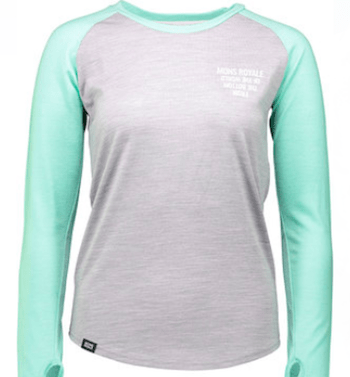
Not that you’re courting death every time you catch a ski-lift, of course. But all the same, on an average day, you’re going to work up a lot of heat, and if all you’re wearing next to your skin is a cotton T-shirt, it’ll be sweaty by lunchtime. As soon as you stop for breather, you’ll feel the chill.
For years now, manufacturers have made ski clothing to deal with the problem – long-sleeved T-shirts and long-johns, which are designed to be worn under your fleece and jacket.
Sometimes (wrongly) known as ‘thermals’, this base layer is designed primarily to keep us dry, not warm (the layers above do that), and it works in two ways. Firstly, it’s extremely un-absorbent, so it can’t hold much moisture, and secondly, it encourages water away from our skin and into our outer layers of clothing.
We’ve tested and reviewed what we believe to be the finest ski base layers available that fill the criteria described. Take a look, and maybe you’ll consider arming yourself with one of them before your next skiing trip…
Getting performance
According to Welove2ski’s Sean Newsom, one fabric does this better than any other in the business – Capilene, designed and manufactured exclusively for Patagonia. Admittedly, he hasn’t tested every base layer under the sun, but he has worn many in his years as a ski writer, and found that nothing has come close to its performance.
His definitive test wasn’t on snow. It came in the Lake District, which is – officially – the wettest place in England.
“I took it for a walk for three hours in the pouring rain – wearing a pair of Capilene long johns under a pair of jeans. Normally, jeans are lethal for hillwalkers, as they soak up huge amounts of water, and can make the person wearing them very cold.
“But with the Capilene underneath, my legs stayed almost completely dry. It was bizarre. Occasionally a rivulet of water would stream off my jacket, onto my jeans, and then down my legs – and then it would be gone, and my legs would be dry again. There was none of that clammy, chilly, dampness you’d expect, and overall my legs felt warm throughout the walk.
“Needless to say, if a base layer can work well in those conditions, it’ll cope with the average sweaty day on the mountains with ease.
“The only problem with Capilene is that after a heavy day on the slopes, it stinks. I don’t mean it smells a little. It’s so evil, given half the chance it’ll walk out of your chalet on its own and start mugging grannies on the street outside. Patagonia has now introduced ‘Gladiodor(TM) natural odor control’ to its Capilene ski base layers: but to be sure you won’t drive your ski buddies away in the course of a one-week trip, you need to pack at least three pairs. Or take some travel soap and do some night-time laundry”.
Try Merino wool…
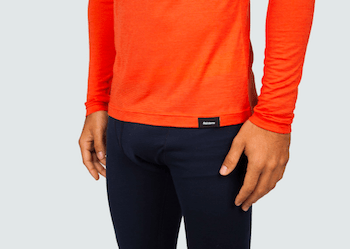
If you can’t or won’t do the above, you could invest in a woollen base layer. The garments made by the Kiwi company Icebreaker won’t keep you quite as dry as Capilene during heavy periods of exercise, they are made from a completely renewable resource, and they don’t smell nearly as bad.
It’s for this reason they’ve been such a hit with the ski-touring community: the kind who have to pack light and sweat hard in the course of their self-propelled trips over the mountains.
Another company that produces excellent Merino wool base layers that really work (we’ve tried them) is Finisterre. Born over a decade ago from the needs of hardy British surfers, Finisterre designs functional and sustainable products that are equally good on the mountain.
…Or a base layer made from bamboo
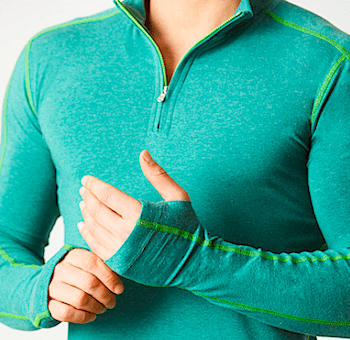
BAM is the leading name in the world of bamboo clothing offering eco-friendly and ethically-made bamboo performance wear. It’s moisture wicking, temperature controlled, anti-bacterial, and anti-static.
Constantly innovating, the company produces comfortable, quality and performance clothing. It’s all 100% machine washable and is easy to pack as it takes up minimal space and doesn’t crease.
Cashmere for pure luxury
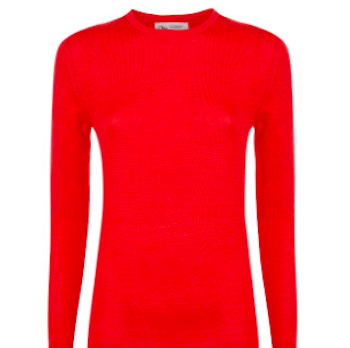
Peter Hardy, of Welove2ski tested the men’s touring gilet and performance jersey from Dhu Performance Cashmere, which provide a practical mid-layer without the bulk. They are both made from 100% cashmere, designed and handcrafted in Scotland. There are matching cashmere leggings, too.
Peter says: “In my time I’ve tried every form of microfibre in an effort to keep warm on the mountain in mid-winter. I find it quite extraordinary that fabric used by the likes of Shackleton and Hillary is actually one the best! I admit to having been pretty sceptical when Dhu introduced me to it, but I am now a convert.
What about washing though? It should be hand-washed in lukewarm water – so don’t put it in a washing machine. It’s naturally odour resistant and it looks extremely smart. Like a lot of ski gear it’s expensive, but you get what you pay for. More cashmere please.
Get a LIFA®
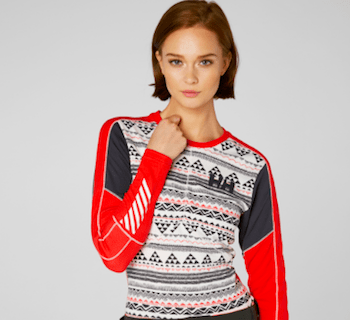
Helly Hansen base layers are some of the best wool base layers on the market. The unique LIFA® fibre technology and premium Merino wool exterior provide great insulation and moisture-wicking properties to keep you warm and dry on the slopes. It stays dry next to the skin, and is warm and non-itchy.
Yak?
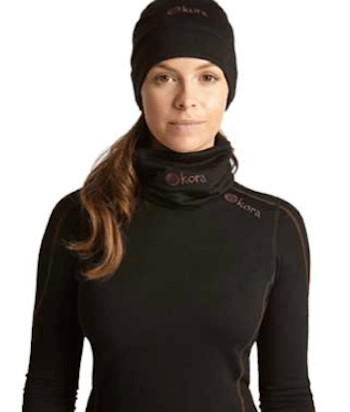
Yes, you heard correctly. Yak’s hair is now being used for ski base layers. The hair is coarse; nomads use it for tents, ropes and carpets, but yak’s wool on the other hand is an inner layer of fine wool that the animal grows to insulate against it the cold – and it is very soft.
kora™ has used it to develop a fabric called Hima-Layer™ made from 100% yak wool. It’s extremely soft, wicks efficiently, is warm, light and breathable.
Recycled energy
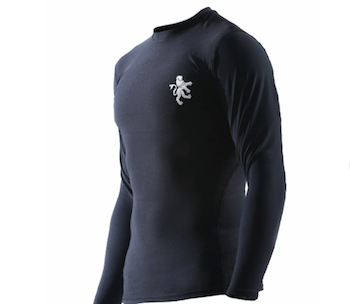
Kymira clothing increases circulation and more importantly, improves tissue oxygen by 20%. The idea is to capture wasted energy, recycle it back into your muscles, and super-charge them.
One of our editors, Peter Hardy, tried these thermals and says: “This sounded like pseudo scientific waffle to me until I tried them. Wearing the long johns takes 10 or 20 year off your age…depending on how old you are!”
Colour blocks
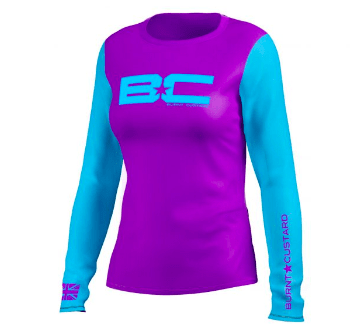
Burnt Custard has some gorgeous colour combinations. In fact you can choose the mix of colours to make your garment totally unique. Burnt Custard‘s UCustom involves choosing from eight different colours for each arm, leg, and the torso…then putting them together to create a unique piece of clothing.
Imagine having a different colour combination for each member of your family, rather than everyone muddling their basic black thermals?
Saving money on base layers
Shops like Snow + Rock and Ellis Brigham have a wide choice of base layers in all prices. However, if you’re a beginner wanting to minimise your initial investment in skiwear (although these are all good for walking, cycling or generally for cold days at home) – or if you’re on a tight budget, search out stores like TK Maxx, Decathlon and Mountain Warehouse for bargains.
That covers the basics
The choice is yours. But whatever you go for, you’ll be doing yourself a big favour financially. Because, for most leisure skiers, once you’ve got the base- and mid-layers right, the pressure to clothe yourself in high-tech garments diminishes significantly. A pair of waterproof-ish ski trousers and a basic windproof, waterproof and breathable outer shell will do you proud (with an extra layer in your rucksack for when the sun goes in). Unless you’re planning to spend all day up to your neck in powder, anything more than that is just a waste of money.
Also see our post on How to Keep Warm on the Slopes, decent ski socks, goggles/sunglasses and gloves.
What do you use?
We’d love to hear what ski base layers you swear by, and any other technical fabrics you simply can’t ski without. Tell us in the comments below.










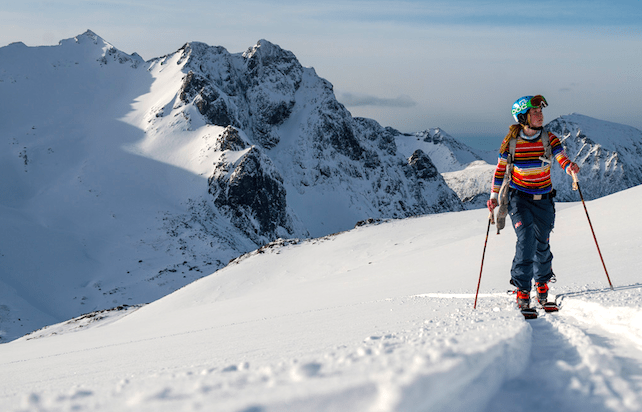

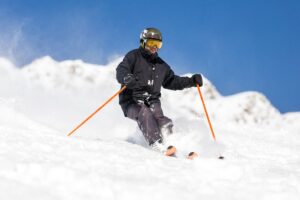
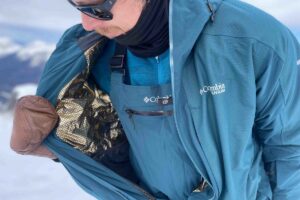
I ski over 100 days each seson and always use wool closest to my body, I live in Norway, Hemsedal were we sometime get temperaturer as low as -20 c, but mostly It stays around -5 10 c. My favorite Brand is Aclima https://www.aclima.no/about-us and I would also recomend Helly Hansen.